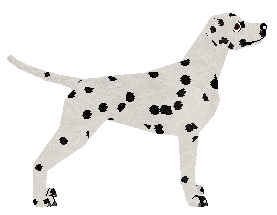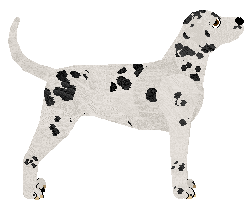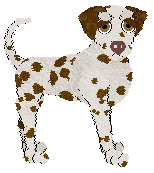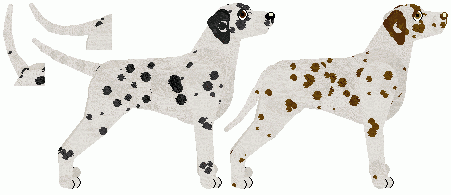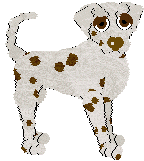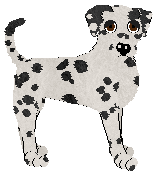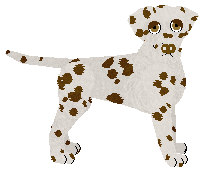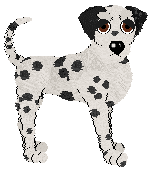Pictures of spotted dogs have been found in egyptain graves from 2000 B.C, but no one knows for sure where the dalmatian originally comes from. It's typical european hound build might be a clue, however. The dalmatian was originally bred to run alongside carriages and guard them, and it still has a strong guarding instinct and makes for an excellent watchdog.
The dalmatian is a unique breed. Its coat pattern is a modified form of ticking, its kidneys work different compared to other breeds and it is famous for its 'smile' - baring of teeth is a happy and submissive manner.
The dalmatian is a breed bred to run, and this should be taken into consideration when judging the breed. It must appear strong and agile. The head is quite long, with marked stop and long, powerful muzzle. The ears are thin, of medium size, set high and carried close to the head. The neck is quite long, muscular and arched. The chest is deep with moderate tuck up. The back is powerul and straight, rounding towards the rear. The tail should be carried in a slight upwards curve. Spots on the tail are desirable, but large patches anywhere on the dog is a fault.
 with
with  (Black variety) or
(Black variety) or 
 (Liver variety) spots.
(Liver variety) spots. in black dogz,
in black dogz, 
 in livers.
in livers. but this is faulted.
but this is faulted.  is allowed as a less preferred blue in non-PFM files (so slightly more faulted).
is allowed as a less preferred blue in non-PFM files (so slightly more faulted). in black dogz,
in black dogz,  in liver.
in liver.
